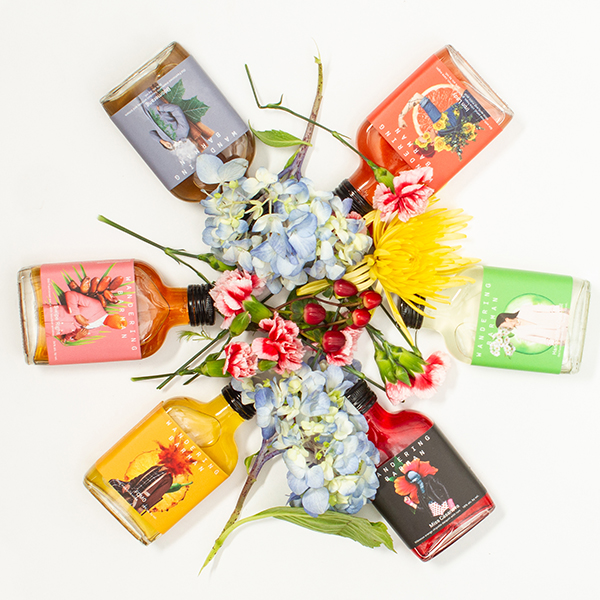New revenue sources that have helped foodservice outlets stay afloat during the pandemic are here to stay, restaurateurs say.
During the early days of the pandemic, as stay-at-home orders swept the country and restaurants were forced to close, foodservice entrepreneurs got to work doing what they do best: dreaming up and executing new ways to stay afloat.
Following are some inventive revenue generators that experts say will become part of business as usual.
1. Restaurant Communities. The COVID crisis has propelled foodservice entrepreneurs to work together in order to survive, says Michael Whiteman, president of food and restaurant consulting firm Baum + Whiteman.
One such collaboration involves artisans in Brooklyn who promote jars of soup sold with bread from a specialty baker, he says. Customers order them online and pick them up at a neighborhood wine shop where potential wine sales can be made.
Sysco recently kicked off a larger scale program in Montreal that supports restaurant communities. #ChefsÀemporter is a 10-week program where 10 of the area’s top chefs team up with 10 local establishments to create 10 exclusive dishes.
“Sysco has put these fancy restaurant chefs together with eating places like sandwich shops and pizzerias that were limited to delivery mode because of COVID,” says Whiteman. “The fancy chefs lend their names and create entirely new, and often surprising dishes that are available for takeaway via Grubhub, helping the little guys survive by injecting new consumer interest into their offerings.”
2. Subscription Services. Table 22 launched last May to help restaurants establish a new model of customer patronage, says founder Sam Bernstein. Its 100 restaurant partners in over 40 cities now offer subscriptions that let their fans experience them in new ways.
“For the restaurants, it provides really favorable financial and operational dynamics: predictable demand, pre-sold product, great margin, brand extension, and an opportunity to test out new categories,” Bernstein says. “We truly believe that these subscriptions are an important tool for reimagining the restaurant business model beyond the pandemic.”
Among the offerings is Frankie’s “Cook the Book Club” from Brooklyn-based Frankies Spuntino. For $150 a month, subscribers receive prepared ingredients to make three dishes, such as Radish Salad with Parsley, Capers & Anchovies, Butternut Squash Soup with Chinese Five-Spice & Honey, and Red-Wine Braised Short Ribs with Rosemary & Fennel.
Restaurants like this make at least five figures in subscription sales per month, says Bernstein, and receive a profit margin of 30 percent or more. Table 22 takes 10 percent of subscription sales.
3. Meal Donations. In order to protect the safety of his employees, Doug Levy, owner of Feast in Tuscon, Arizona, closed his restaurant to in-person dining even after the state allowed foodservice establishments to reopen.
To help make ends meet, he sought donations via email from a list of 4,500 patrons and friends of the restaurant, that he’d built up over his 20 years in business. Charging what he would charge for a meal in the restaurant, he used the funds to make and vacuum seal meals for the area’s first responders. For every 250 meals donated, Levy donated 50.
“This is a great way to harness the generosity of the community,” he explains. “The cost of those meals covers ingredients, labor, and hard costs like electricity and gas. We’ve fed about 6,500 people so far and we’ll continue to do this, but with more of an emphasis on people who really need it.”
4. Packaged Specialties. Julian Mohammed and Darren Grenia, owners of the Brooklyn-based Dear Bushwick restaurant and the Yours Sincerely all draft cocktail bar, developed Wandering Barman handcrafted bottled cocktails (pictured above) along with their bar and restaurant manager, Roxane Mollicchi.
“We built it out of need after having a hard time maintaining a good craft cocktail program that delivered consistency at the right price,” says Mollicchi. “We saw this as a solution to increase speed of service.”
Although the ready-to-drink bottled cocktails were in development pre-COVID, sales began to grow as bars and restaurants became closed to in-person dining and switched to takeout. Off-premise liquor sales also began to climb.
“This is pandemic proof,” Mollicchi says. “As restaurants expanded to delivery and were looking to make cocktails to-go, we saw an increase in volume and began working with bigger accounts.”
Julie Gallagher is managing editor of Specialty Food.
Image: Wandering Barman

